Morphological Operators¶
New in version 0.8: open() & close() were added in version 0.8
Morphological operators were the first operations in mahotas (back then, it was
even, briefly, just a single C++ module called morph). Since then, mahotas
has grown a lot. This module, too, has grown and acquired more morphological
operators as well as being optimised for speed.
Let us first select an interesting image
import mahotas
import mahotas.demos
from pylab import gray, imshow, show
import numpy as np
luispedro = mahotas.demos.load('luispedro')
luispedro = luispedro.max(2)
T = mahotas.otsu(luispedro)
lpbin = (luispedro > T)
gray()
eye = ~lpbin[112:180,100:190]
imshow(eye)
show()
(Source code, png, hires.png, pdf)
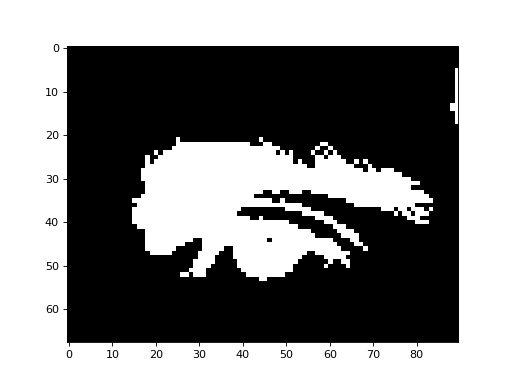
After Oct 2013, you can get this image with mahotas as:
import mahotas.demos
luispedro = mahotas.demos.load('luispedro')
luispedro = luispedro.max(2)
Dilation & Erosion¶
Dilation and erosion are two very basic operators (mathematically, you only need one of them as you can define the erosion as dilation of the negative or vice-versa).
These operations are available in the mahotas.morph module:
mahotas.morph.dilate(eye)
Dilation is, intuitively, making positive areas “fatter”:
imshow(mahotas.morph.dilate(eye))
show()
(Source code, png, hires.png, pdf)
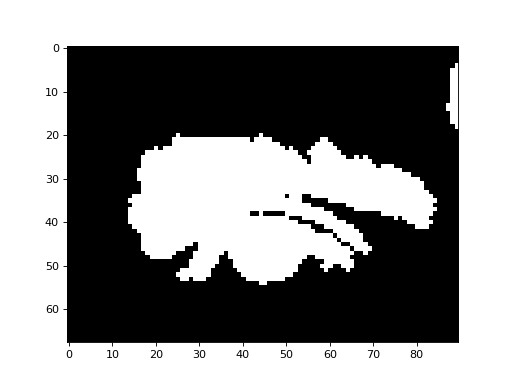
mahotas.morph.erode(eye)
Erosion, by contrast, thins them out:
imshow(mahotas.morph.erode(eye))
show()
(Source code, png, hires.png, pdf)
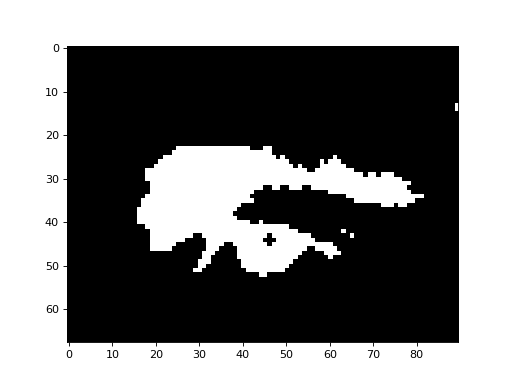
Mahotas supports greyscale erosion and dilation (depending on the dtype of
the arguments) and you can specify any structuring element you wish (including
non-flat ones). By default, a 1-cross is used:
# if no structure-element is passed, use a cross:
se = np.array([
[0, 1, 0],
[1, 1, 1],
[0, 1, 0]], bool)
However, you can use whatever structuring element you want:
se = np.array([
[1, 1, 0],
[1, 1, 1],
[0, 1, 1]], bool)
dilated = mahotas.morph.dilate(eye, se)
eroded = mahotas.morph.erode(eye, se)
Note that when you pass it a non-boolean array as the first argument, you will get grescale erosion. Mahotas supports full grescale erosion, including arbitrary, flat or non-flat, structuring elements).
Close & Open¶
Closing and opening are based on erosion and dilation. Again, they work in greyscale and can use an arbitrary structure element.
Here is closing:
mahotas.morph.close(eye)
imshow(mahotas.morph.close(eye))
show()
(Source code, png, hires.png, pdf)
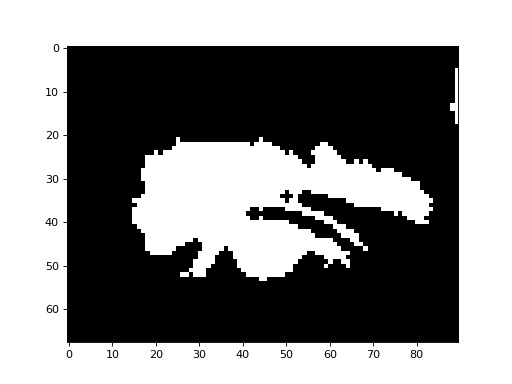
And here is opening:
mahotas.morph.open(eye)
imshow(mahotas.morph.open(eye))
show()
(Source code, png, hires.png, pdf)
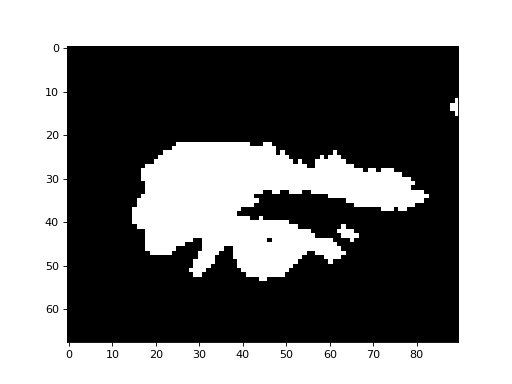
Both close and open take an optional structuring element as a second
argument:
mahotas.morph.open(eye, se)